Insect pests are a part of organic gardening—there is just no getting around it! You can help prevent pest pressure by making sure your soil is healthy (and therefore your plants will be, too), increasing beneficial insect populations, rotating crops, and using companion planting, but even with all that in place, an organic vegetable garden is going to have an insect infestation at some point—it’s just part of the game!
In this article, we’re going to share with you one of our first lines of defense when we first spot critters crawling on our plants—our all-natural bug repellent. This gentle mixture works the same way many insect-repelling companion plants do. This highly-scented spray doesn’t kill insects, but it does mask the scent of their host plants so they get confused and hopefully fly, crawl, or jump off somewhere else!
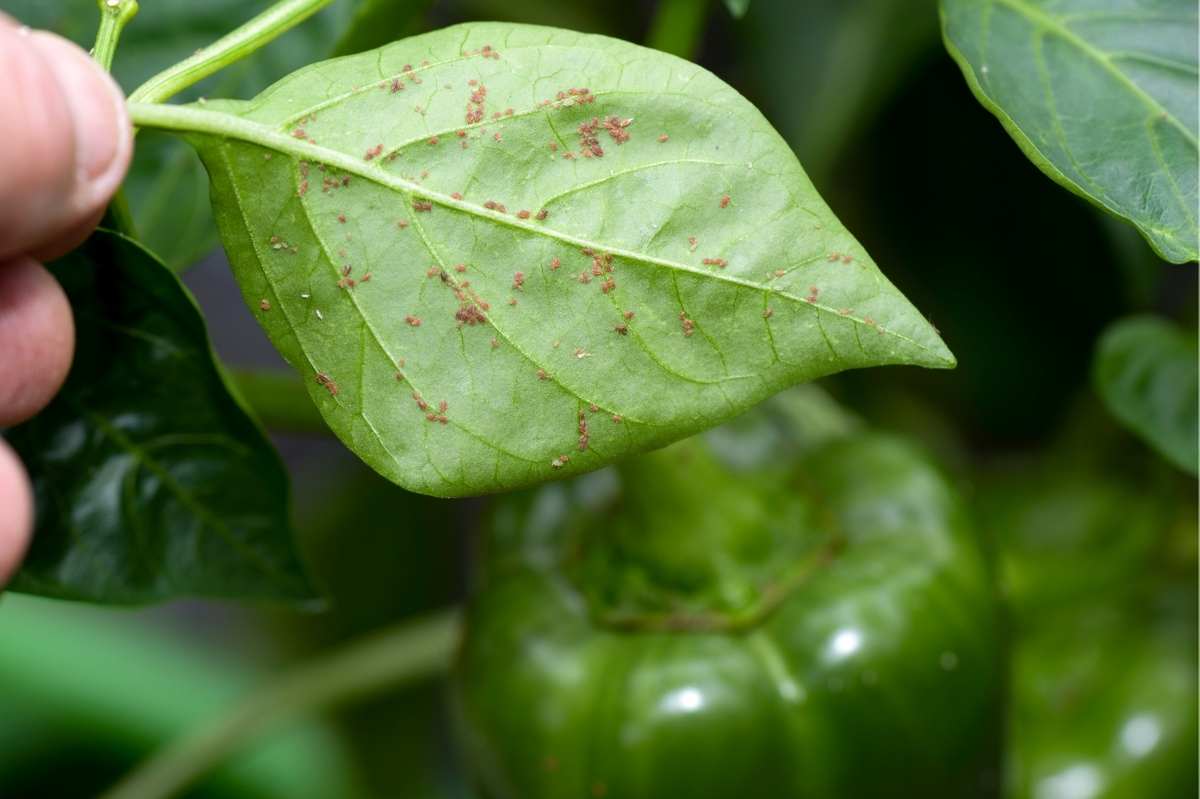
This is a great option if you aren’t quite ready to bring in the natural pesticides that can kill or harm the insects—like neem oil spray, insecticidal soap, Spinosad, Bacillus thuringiensis (Bt), or diatomaceous earth (DE). We personally believe that if insects aren’t present in your garden, then you aren’t part of the ecosystem! But just be aware, this is a gentle first step in preventing insect pressure—depending on the intensity of your infestation, you may need to step up your tools if this natural spray doesn’t do the trick.
Table of Contents
How do I keep bugs from eating my plants?
We are big believers in Integrative Pest Management (IPM) here, which just basically means having layers of protection (biological, chemical, cultural, and physical methods) to help keep your garden from being inundated by plant-eating insects. It’s not just one thing we do to keep our tomato plants free from aphids, it’s about a half dozen! Here’s how we reduce pest pressure:
- Maintain healthy soil. Healthy soil makes for healthy plants. And healthy plants are less susceptible to insect damage.
- Practice crop rotation. This isn’t always possible in small gardens, but we never plant crops from the same family before or after one another—this helps to remove the host from any insects that overwinter in the soil.
- Intercropping and companion planting. We don’t typically just plant a bed of tomatoes—we have tomato plants sprinkled throughout the garden. Intercropping different varieties together can confuse insects, and make it hard for them to find their favorite host plant. Companion planting to prevent insects is the same idea! You focus on planting insect-repelling plants (typically high-fragrance herbs and flowers) around your veggie crops to confuse insects.
- Practicing polyculture. This goes hand in hand with intercropping and companion planting, but we work hard to mix types of plants and cultivars within types.
- Using row covers. Sometimes just covering a crop with simple insect netting is enough to keep it safe. We always use insect netting on our brassica family plants to prevent cabbage moths from laying eggs.
- Increasing our beneficial insect populations. Use the circle of life to your advantage! We grow pollinator and beneficial insect-friendly plants to increase our populations of natural predators to pests, and we have bird-feeders and houses near our garden to increase their populations (they love slugs and hornworms!).
Those methods are our foundation, and then, if needed, that’s when we bring in the targeted pest management sprays and insecticides, like this natural bug repellent.
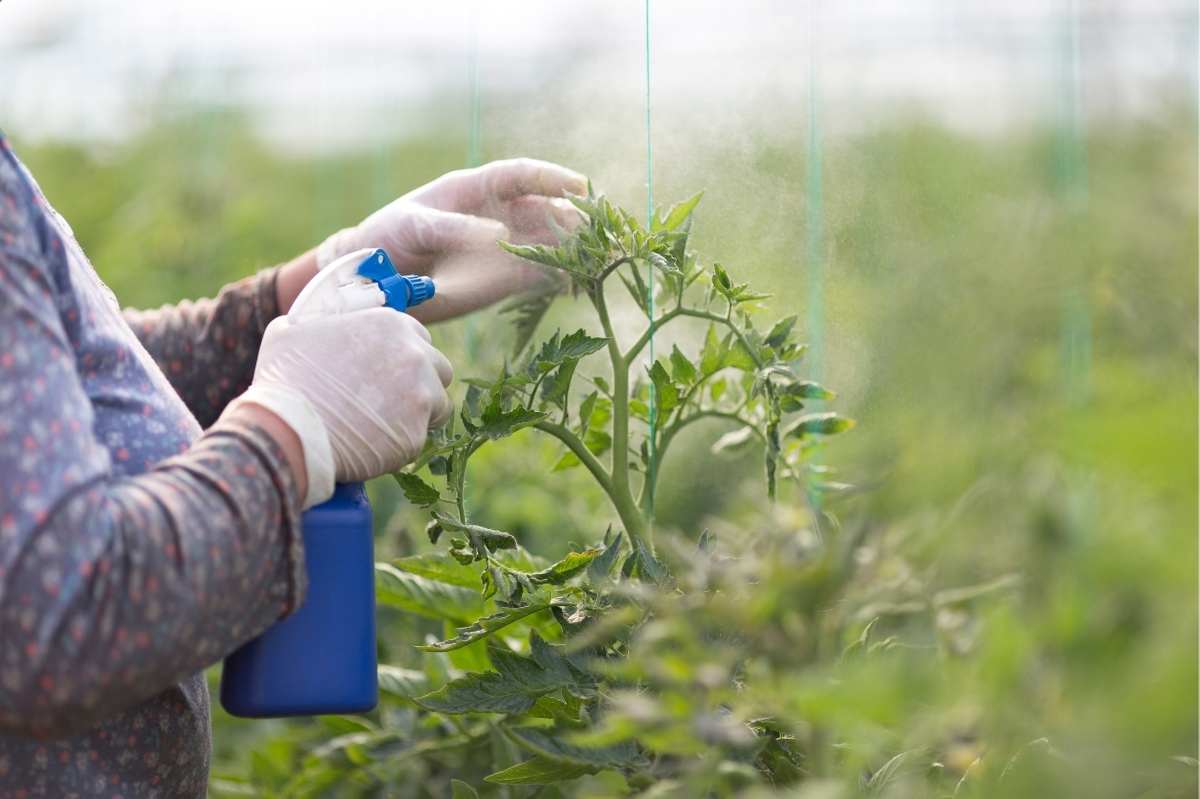
What’s in this natural bug repellent for plants?
The key to making this bug repellent is to make it super fragrant (or even stinky)! We highly recommend you work with what’s available in your area and craft your own perfect spray, but here is what we typically use:
- Garlic: Garlic is so strong smelling that it can mask most plants and confuse insects into moving on.
- Rosemary or Mint: If you have some fresh rosemary on hand (skip dried), it’s our favorite herb addition because it is just so incredibly fragrant. However, if rosemary isn’t easy to get your hands on, mint (or honestly, any member of the mint family) will also work.
- Hot Peppers (optional): If you are interested in this recipe for its insect repellent properties instead of its insect-killing properties, you might want to skip the hot peppers. While pepper spray can be pretty effective, chemical compounds in chile peppers (capsaicin) can also harm bees and other pollinators and beneficial insects. We typically try the mixture without peppers first, and then if that doesn’t do the trick, we mix up a batch with peppers. And we never spray the pepper spray when plants are flowering or when pollinators are present.
- Dish soap (optional): This works as a surfactant and helps the spray “stick” to the plant longer.
Growfully Protip
Experiment with the stinky plants you have on hand! Almost anything with a strong fragrance will work. Swap onion in for garlic cloves, use basil instead of rosemary. Have citronella? Awesome, toss that in. Dill, lemon balm, lemongrass, chrysanthemums, black pepper, catnip, ginger, lavender, sage, thyme all work, too! Even tomato leaves (and their powerful alkaloids) will do the trick. Make your own magic brew.
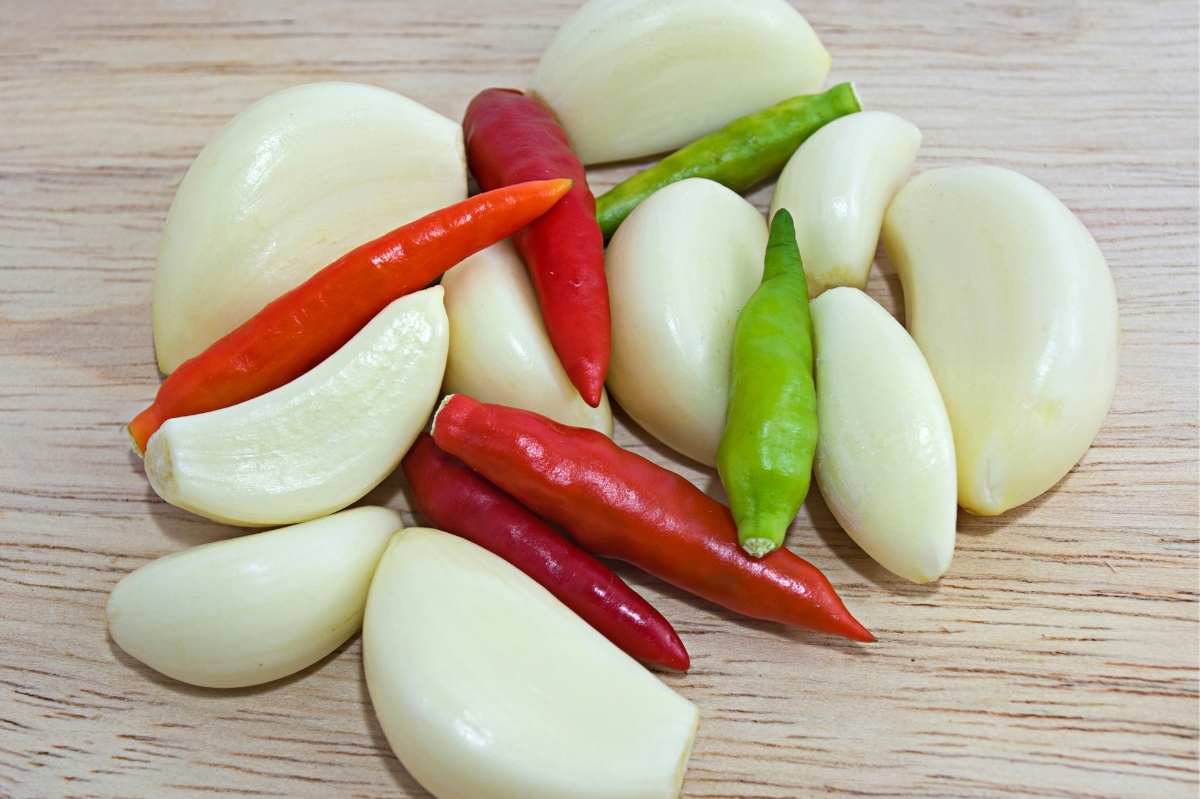
Why should I use these ingredients for organic pest control?
The goal with any and all of these ingredients is the same goal with companion planting to reduce insect pressure—mask the scent of host plants and confuse the insects into moving onto less-smelly and confusing pastures.
Imagine this: you were super excited for dinner at your favorite pizza parlor. You walk inside, expecting that delicious pizza smell, but instead, it smells like a sewage treatment plant—you’d probably think twice about eating there, right? Same idea!

Which bugs will this repel?
Any insect that uses its sense of smell to root out its next meal will be repelled by this mixture—although specific insects might react better to specific repellents. We’ve seen this work to repel spider mites, whiteflies, snails, slugs, mosquitos, ticks, aphids, and flea beetles.
How do I make natural bug repellent for plants?
All you need is a good blender and a spray bottle to get this repellent going:
- In a blender, combine the plants you are using (we have suggestions down in the printable recipe below) and water.
- Blend until it is a smooth slurry.
- Strain the mixture through a nut milk bag or cheese-cloth lined sieve.
- Pour the mixture into a spray bottle. Add in the dish soap. Close the lid and gently swirl to combine.
- You can keep the spray in the fridge for up to a week when not using.
Growfully Protip
If you are using cayenne peppers or other chile peppers, make sure to wear gloves when handling them!
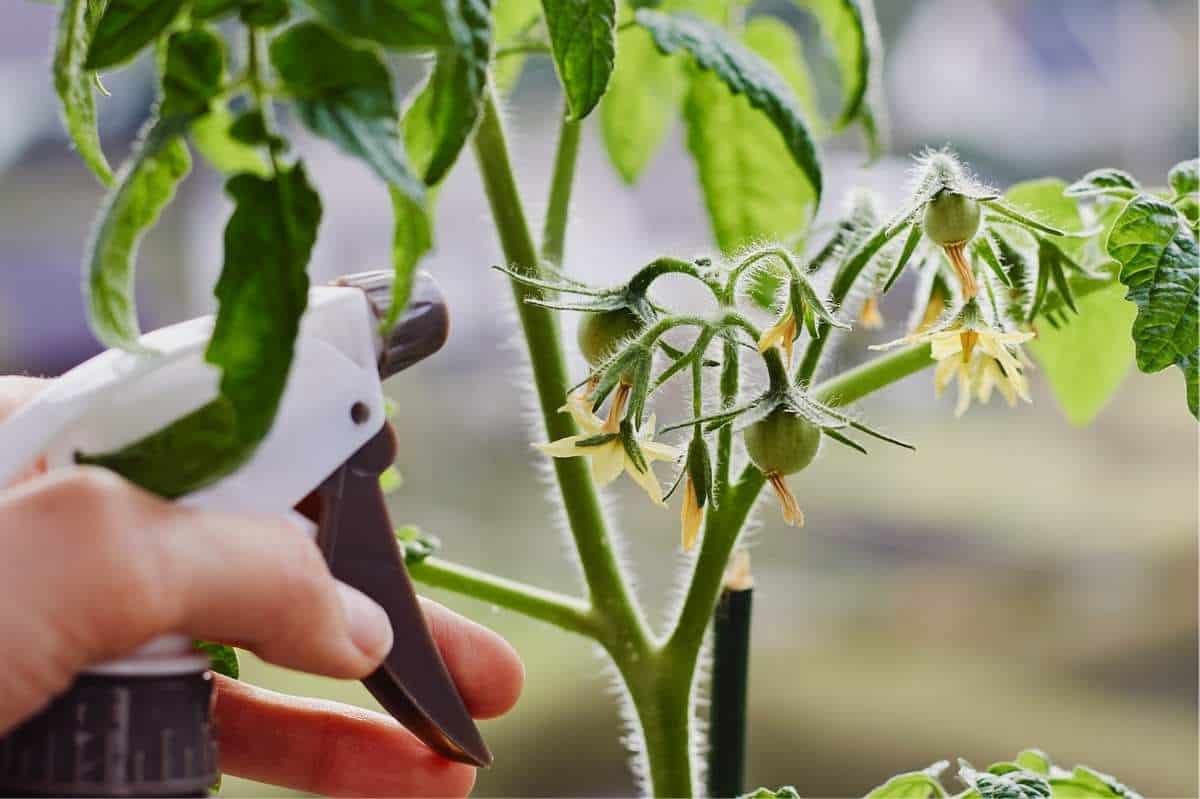
How do I use this natural insect repellent?
This pepper spray is a breeze to use. Just take your spray bottle out to your infested plant, and spray the entire plant—stems, leaves, and underside of leaves. Reapply every 2-3 days, or after rain, until your pest populations decrease.
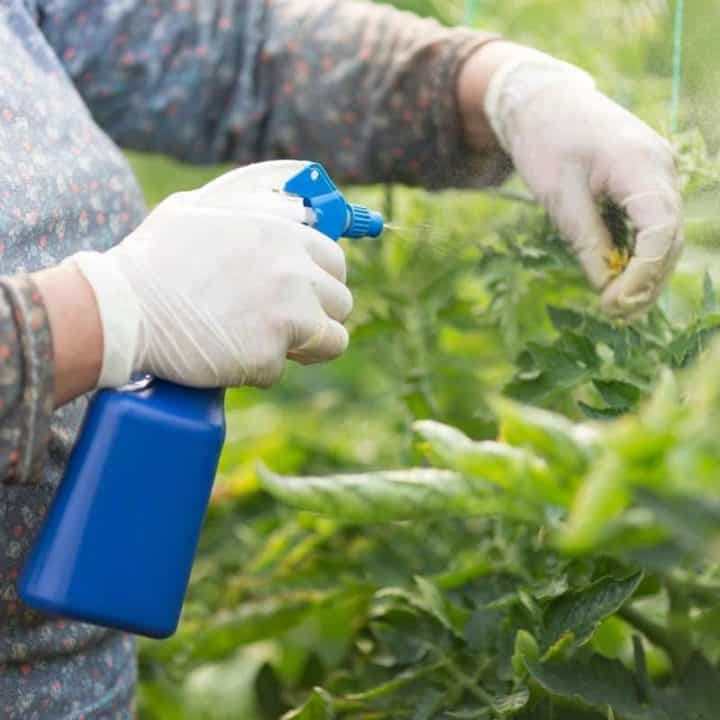
Effective Natural Bug Repellent for Plants
A homemade bug spray made with a few kitchen ingredients can repel aphids and other garden pests. Let's talk about this natural bug repellent for plants and how to make it!
Materials
- 2-5 cloves of garlic
- 1/4 cup fresh rosemary or peppermint
- 1-2 chile peppers, optional (see notes)
- 2-3 cups of water
- 2 teaspoons dish soap, optional (see notes)
Tools
- Blender
- Nut milk bag or cheesecloth-lined sieve
- Spray bottle
Instructions
- In a blender, combine the garlic, chile peppers, rosemary, peppermint, and water.
- Blend until it is a smooth slurry.
- Strain the mixture through a nut milk bag or cheesecloth-lined sieve.
- Pour the mixture into a spray bottle. Add in the dish soap. Close the lid and gently swirl to combine.
- You can keep the spray in the fridge for up to a week when not using.
- To use: spray the entire infested plant—stems, leaves, and underside of leaves. Reapply every 2-3 days, or after rain until your pest populations decrease.
Notes
- Chemical compounds in chile peppers (capsaicin) can cause harm to bees and other pollinators and beneficial insects. We typically try the mixture without peppers first, and then if that doesn't do the trick, we mix up a batch with peppers. And we never spray the pepper spray when plants are flowering or when pollinators are present.
- Dish soap works as a surfactant and helps the spray "stick" to the plant longer. It's not necessary, but it does help effectiveness.
- Feel free to experiment with other scent combinations—anything you have on hand that is strong-smelling will help!








would peppermint essential oil work?
I’ve never done it, but that part of the tick and mosquito repellent spray Mosquito Joe uses for us, so it might work
Can I make a bug spray from cedar branches boiled in water?
That’s not something we have experience with, so we aren’t sure!